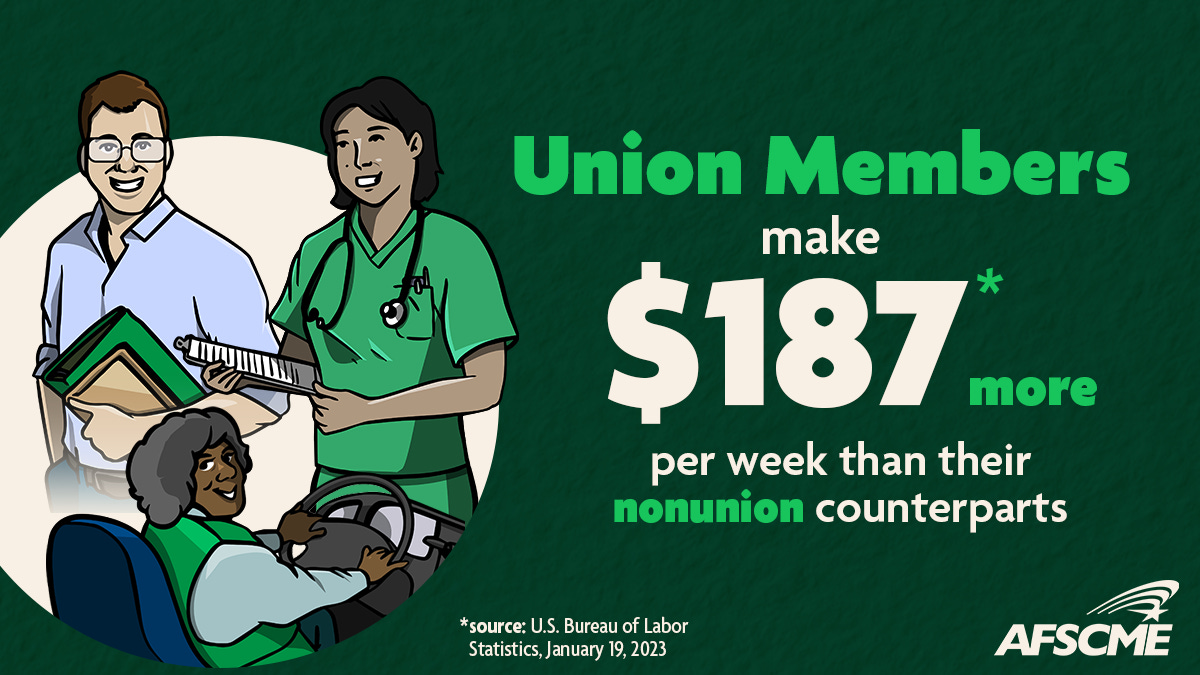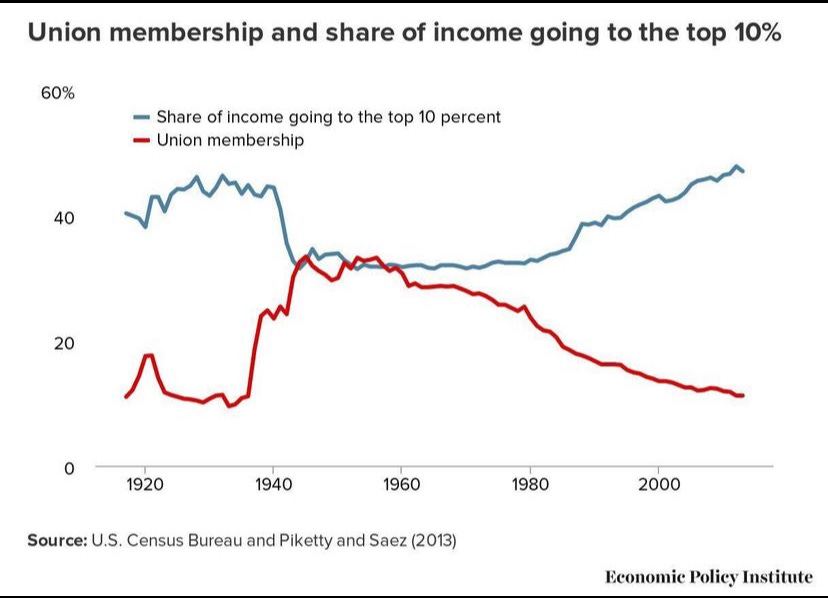A MORE PERFECT UNION: ORGANIZING FOR 2025 AND BEYOND
Collectively, nominees to lead departments in the new Musk/Trump administration have been described as more like a junk drawer than a cabinet. It’s easy to see why; few would consider putting people such as RFK Jr., Dr. Oz, or Kash Patel in charge of watching paint dry let alone key policies such as public health and national security. Like birds that take flight in flocks of thousands to confuse predators, sending up dozens of unqualified if not dangerous candidates all at once is meant to distract us from focusing on any single idiot. Yet there is one normal nominee among the flotsam.
On November 23 of last year, Musk/Trump nominated Lori Chavez-DeRemer to serve as Secretary of Labor. Chavez-DeRemer represented Oregon’s 5th Congressional District from 2022-2024 as a moderate Republican but recently lost reelection. During her tenure she demonstrated support for organized labor and workers’ rights as one of three Republican co-sponsors of the PRO (Protecting Right to Organize) Act that would have made it easier to unionize as well as increase penalties for employers who break labor laws. She also co-sponsored the Public Service Freedom to Negotiate Act to expand the power of public sector unions and worked to develop apprenticeship opportunities. These and other actions earned her the endorsement of the International Brotherhood of Teamsters and 20 other labor groups.
Of course, as AFL-CIO President Liz Shuler commented on the nomination, “It remains to be seen what she (Chavez-DeRemer) will be permitted to do…in an administration with a dramatically anti-worker agenda (The Hill). During his first term in office, Trump stacked the National Labor Relations Board (NLRB) with members who would side with bosses and ran their playbook. Per the Economic Policy Institute, “the Trump board took action on all 10 of the [US Chamber of Commerce’s] top priorities, all of which gave more power and rights to employers at the expense of workers.” This is in sharp contrast to the last four years of strong support for labor under President Biden.
President Biden announced in September 2021 that he intended to be the most pro-union president in history; history may well judge him to have been at least the most pro-union president since FDR. In 2022, Biden issued an executive order to mandate the use of labor agreements for federal construction projects, which requires the hiring of unionized workers. His administration also created new rules around pay equity for federal workers (The Conversation). He later became the first president to walk a picket line when he marched with striking UAW workers in 2023. Beyond that, his administration banned noncompete clauses, raised the minimum salary threshold for overtime pay, and the number of workers filing for union representation doubled over the course of Biden’s administration (WhiteHouse.gov).
As a result of these actions, or perhaps alongside them, public support for unions rose to 70%-- its highest level since 1965. This is especially true among the Gen Z cohort; in fact, Gen Z is America’s most pro-union generation, even more so than older workers were at their age. This is partly due to increasing racial diversity in younger Americans, as nonwhite races and ethnicities tend to be more supportive of unions. And increased support for unions among workers with college degrees shows that Gen Z is also closing the long-standing divide between white-collar and blue-collar workers (American Progress).
Why? Because for workers, it pays to belong to a union. Literally. In addition to higher pay, 96% of union workers have employer-provided health insurance, but only 69% of nonunion workers do. And many more union members participate in an employer-provided guaranteed pension plan than working people without a union (54% compared to 8%) (AFLCIO.org). The union advantage is even greater for people of color, women, immigrants, and others who encounter workplace discrimination. A union contract protects workers against unequal pay and structural racism because it establishes fair and transparent systems for hiring and firing, wages and more.
For these and other reasons, employers continue to fight against unionization. In important ways, they are winning. Union density—the number of union members as a percentage of the total number of employees—remains at just 6% in the American private sector, down from 32% in 1960. Not surprisingly, then, there is a huge gap between the share of workers with union representation (12.1%) and the share of workers who want union representation (48%). Despite Chavez-DeRemer’s pro-labor record, this gap seems unlikely to shrink under Musk/Trump without increased pressure from both workers and the public.
LOOK FOR THE UNION LABEL
That’s where we come in. There is much that we the public can do to support and expand labor protections, starting with making smart decisions with our dollars. How? Like many/most (all?) Americans, you sent packages of gifts to friends and family over the holidays. Aside from the U.S. post office, the two main choices for shipping are UPS and FedEx Ground. Both deliver packages but the similarities end there. UPS, which signed an historic labor contract with its employees in 2023, now pays its drivers a starting salary of $25.75 per hour. Full-time delivery drivers earn an average total compensation package of $145,000 per year, which includes $0 healthcare premiums, up to seven weeks of paid vacation, plus an average of 18 days off for holidays, sick leave and option days. UPS also contributes to a defined-benefit pension plan for each employee. FedEx drivers, OTOH, are not unionized. In fact, they technically do not even work for FedEx. At FedEx Ground, drivers are independent contractors, so FedEx doesn’t have to provide them with Social Security or unemployment insurance, or even pay minimum wage, as required by law when workers are employees.
Obviously, choosing UPS to send your packages next time supports union workers, and there are many other such choices we can make every day. Planning a big blowout for the Super Bowl? Get union made snacks and suds HERE. Looking for love this upcoming Valentine’s Day? Buy from these companies to make sure you give union made flowers and chocolates (you’re on your own for promises you don’t intend to keep). The list of goods and services at Made in America can help you sync your spending with support for American labor all year long.
UNITED WE STAND
Another important way to support union workers is to be one. If you are among the 48% who are not represented by a union on the job but want to be, there are many options and resources to explore. To start, check out the series of free training videos from the Emergency Workplace Organizing Committee (EWOC) that explains how to talk to your coworkers about forming a union, create a team of organizers, build your campaign, what to do when the boss responds badly to your organizing and much more. Then you can complete and submit a short form and a trained volunteer will contact you with more support for you and your coworkers to demand and win necessary protections at your workplace. You can also sign up to BE a volunteer organizer and help workers start petitions, connect with other workers, approach management, and successfully organize for better working conditions.
Finally, many labor laws and protections are enacted at the state rather than federal level. Regardless of how Secretary Chavez-DeRemer administers her department (if confirmed), decisions about such critical labor issues as minimum wage, collective bargaining rights, fair employment, and other matters that impact workers are often decided by state legislatures. For example, while average American CEO compensation has risen to $16.3 million per year, 20 states still have a minimum wage of $7.25 an hour. Find out what’s happening in your state HERE and HERE and let your state representatives know your commitment to fair pay and labor protections for workers.
SEIZE THE DAY
The Musk/Trump administration promises to be a shit show on many fronts. With limited time and resources, focusing on people and policies that seem least opposed to sensible solutions for the challenges ahead seems prudent. Preparing now to preserve and promote worker rights under the direction of Chavez-DeRemer as Secretary of Labor may be just such an opportunity.






